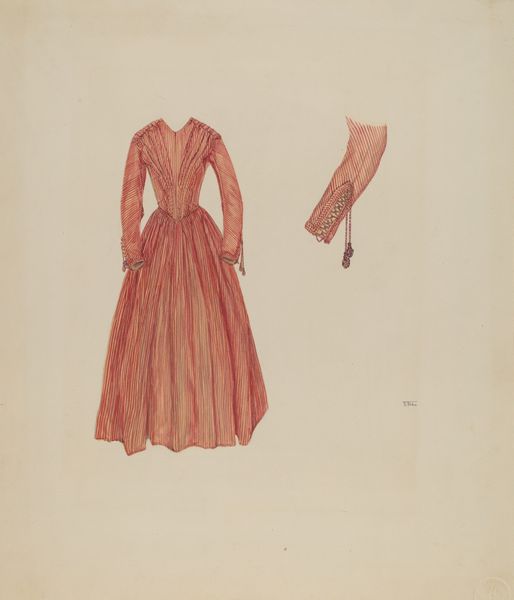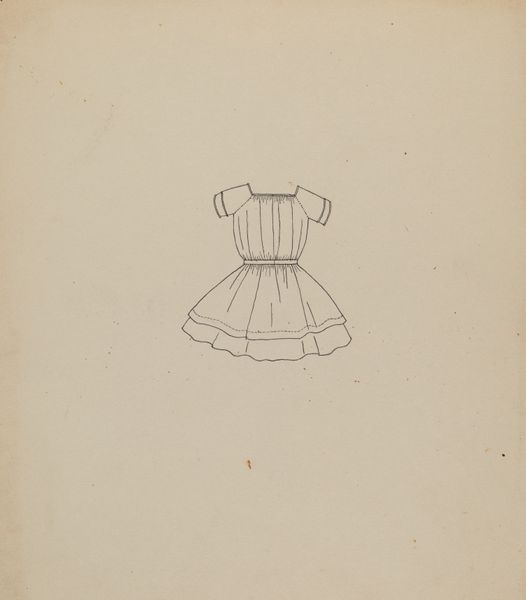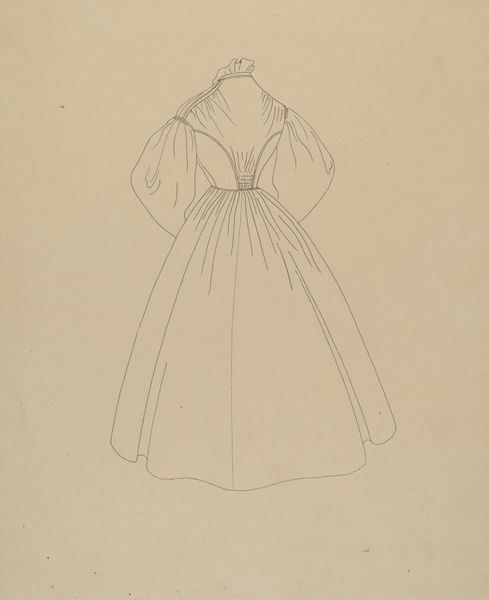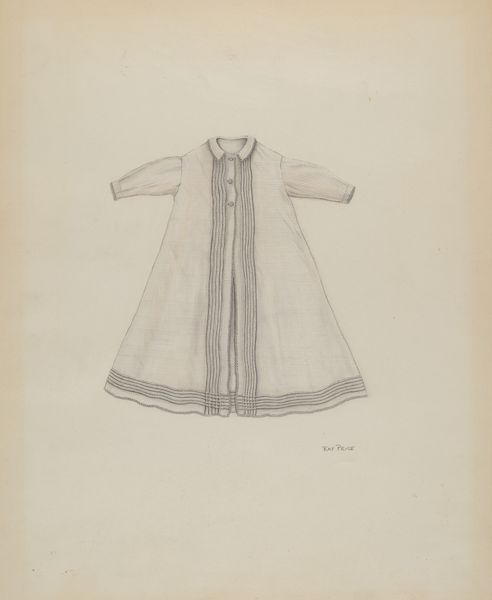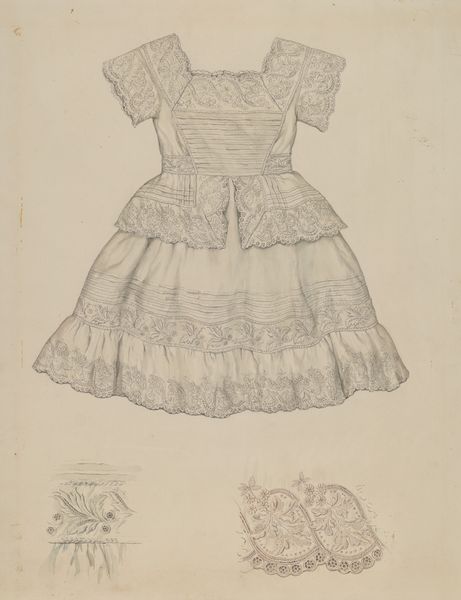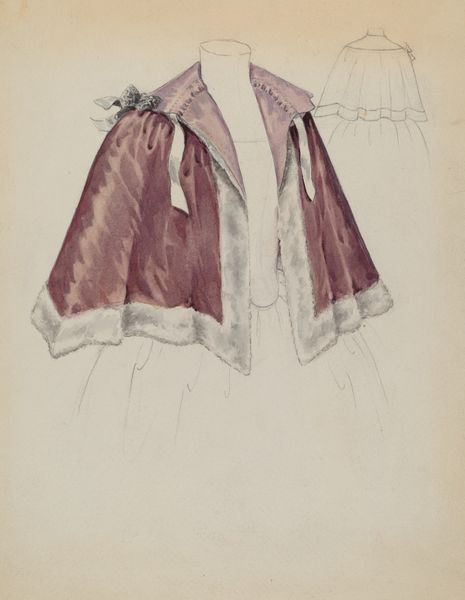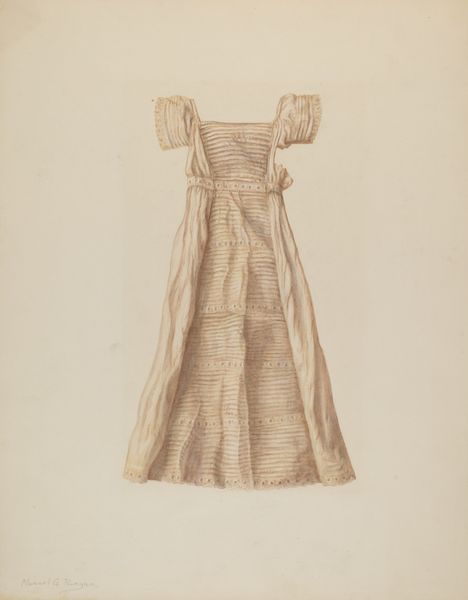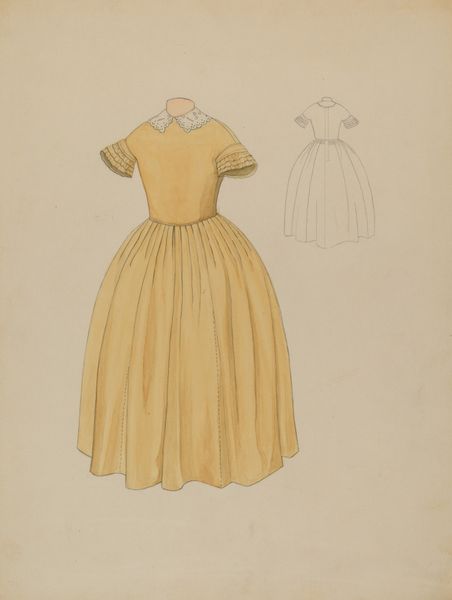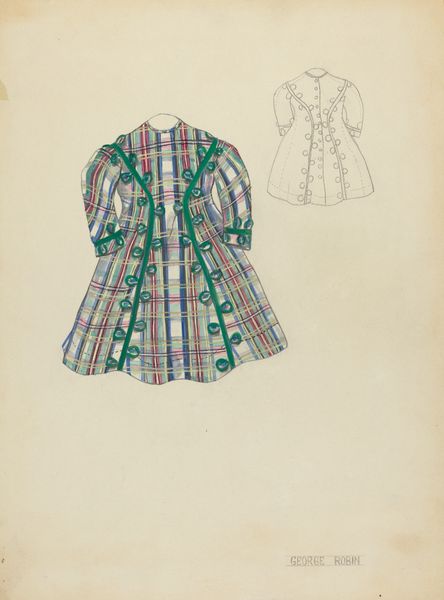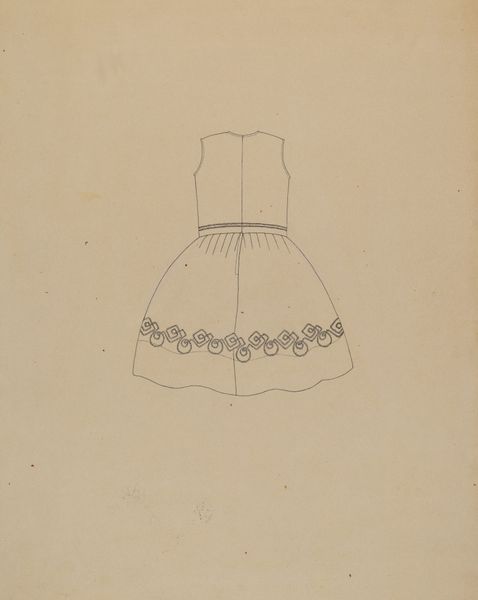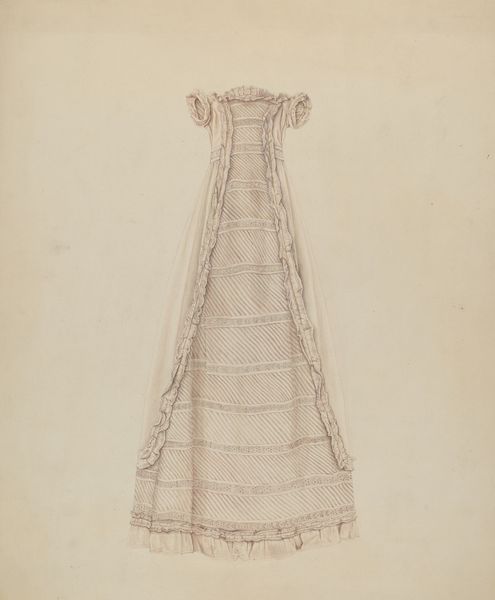
drawing, pencil
#
portrait
#
drawing
#
pencil
#
academic-art
Dimensions: overall: 42.5 x 36.7 cm (16 3/4 x 14 7/16 in.)
Copyright: National Gallery of Art: CC0 1.0
Curator: What a delicate rendering! This is "Child's Dress," a pencil drawing completed around 1937 by Ray Price. Editor: It’s deceptively simple at first glance. I notice immediately the repeated pattern – it's not quite plaid or gingham, but it gives the dress a subtle, almost dreamlike texture. And there are two views of the dress… Curator: Ah, yes. From the front, we see the puffy sleeves and frills evoking childhood innocence. And behind? Notice the unadorned, perhaps functional perspective; perhaps it hints at the labor of keeping a child clothed and presentable. The single garment, imbued with layers of societal expectation! Editor: Indeed. That front view feels performative. Those sleeves! They remind me of a time when clothing literally embodied status and aspirations, shaping not just the body but also social perception. The overall composition—pale grays offset with rosy pink highlights– feels studied. Curator: It’s a visual echo of simpler times, rendered in a palette that softly romanticizes the past. One wonders about the child who might have worn such a dress – her social standing, perhaps her very hopes and dreams, are woven into those delicate pencil strokes. Think of the semiotics—what does the bow on the pocket tell us? Is this meant as functional? A feminine touch? Editor: Absolutely, that bow placement anchors it; leading the eye through a network of visual relations. And the meticulous detail hints at either real or fantasized experiences. It might have existed as inspiration, for marketing material, or some similar function that it never carried out. It feels functionalist in some way… Curator: Or consider this garment’s ghost in the machine; even as lines fade and forms loosen into abstractions the echoes of a vanished generation reverberate through art such as this – cultural memory clinging to textile like love… or fear... Editor: Very true. Through structure we might understand so much – from a study of technique to the context in which art becomes meaningful, or poignant, or, simply – an echo from someone's lost memories. Curator: What better purpose, then, than allowing this work, and the lost memory within, its resonance in our own fleeting moment? Editor: Agreed. I appreciate a closer look at those pastel highlights, as they suggest something delicate on a more complex web; which speaks, I think, for itself.
Comments
No comments
Be the first to comment and join the conversation on the ultimate creative platform.
